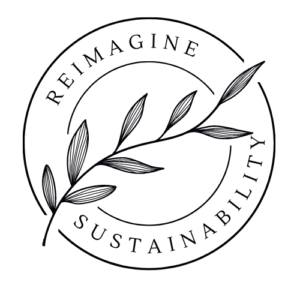Our existence depends on circular systems. Be it that we live on a round planet. The invention of the wheel or simple toys like a ball. All of them fundamentally impacted humanity’s development and moved us around the world. Truly, circular flow is simply natural and beneficial for our development. So why isn’t it the circularity norm?
Circularity is a bottom-line concept in the Sustainability space. Without it, we cannot achieve the sustainable goals we strive for. Why is that? Good things take time. An often overlooked point is that the Earth’s systems are circular. Over billions of years, circular systems enabled the prosperity of life. The history of life is so rich and diverse because it took time for them to be established.
Circular design became very popular and nature is our best teacher. To do our job well, we need to adapt to natural systems and use their valuable knowledge to create systems that benefit everyone and everything.
What is the definition of circular?
In its simplest form circular or circularity is defined as the shape of a circle. In a context of a system, circularity refers to the practice of closed-loop systems.
Often, you will come across words starting with “Re” when describing circular systems like recycle, reuse, remanufacture etc. I wrote an article focusing on the Rs of Sustainability, see it here: The Rs Of Sustainability: The Best Effective Way To Apply Them
Most popular framework for circular economy
Most prominently, the Ellen McArthur Foundation is devoted to educating about circular systems in the economy. A widely-used visualisation is the butterfly diagram which refers to the continuous flow of resources on our planet. On the right side, is the technical cycle where products and materials are circularly connected through processes like recycling, reuse, and repair. On the left side, the biological cycle refers to the nutrients from biodegradable resources which stay in the Earth’s systems to regenerate nature.

Visualisation of the circular economy by the Ellen McArthur Foundation
In a bigger context, circular systems aim to incorporate waste products back into the system and maximise the reuse of resources. Our planet has an abundance of resources that are finite and infinite. Without circular systems, resources can exhaust fast. A circular economy supports solid sustainability strategies which enable us to handle our natural resources conscientiously. Therefore, a sustainable economy has to be based on profound natural laws.
For this reason, a circular economy is a systems solution framework that has the power to solve our world’s challenges like the climate crisis, biodiversity loss, waste problem and pollution. All those problems are derived from poorly managed industries that enhance rather than solve our challenges. A circular economy can be applied to any industry because all industries depend on our Earth’s resources and functioning systems.
Is resilience the new sustainable?
Resilience is an important attribute when it comes to circular systems. It refers to the capacity of being able to recover quickly from difficulties. Toughness is a good word to describe resilience because we all know life’s not easy.
Maybe you’ve experienced it yourself when you live closer to natural areas, or you use escapes into nature to tank up your energy levels. The closer we are to nature, the more resilient we become. No wonder doctors are prescribing a walk in nature.
A resilient system has the capability to sustain itself and benefit every part involved in it.
Why do we need circularity?
To understand why we need circularity, we have to ask: what is the problem? The problem is an uncontrolled and excessive influence of human actions on our natural systems. We have made it so far by ripping off the Earth’s capability to regenerate itself. Hence, we are not only damaging our Earth, but also our livelihoods.
If you are interested in the importance of resource use and the regenerating capability of our Earth, I recommend that you check out the Global Footprint Network. They also provide information on “when humanity has used all the biological resources that Earth regenerates during the entire year”: Earth Overshoot Day.
Right now, we are consuming more resources than Earth can regenerate. The Earth Overshoot Day landed on the 28th of July 2022. It’s like eating in a nice restaurant without paying the bill.
A primary aim of a transition towards circularity is to decouple economic activity from the use of finite resources. Unfortunately, the capitalistic lifestyle depends on the massively excessive use of resources.
To be honest with you, I grew up and still live in capitalistic structures and it’s not worth it. Sure, it might be hypocritical of me, but I try to make a difference and many others do as well. It won’t come overnight unless we make it possible. Finding solutions to reliance on Earth’s finite resources is what we have to achieve.
Understanding our limits on Earth will reveal the solutions we need
Our excessive resource use is pushing our planetary boundaries to their limits. The Earth has finite and infinite resources. Sadly, we are already in trouble with our infinite resources because we pollute our air, water and soils. This exhausts the Earth’s capability to provide us with timber, food, freshwater etc. If you’re curious about the limits of our planet, I will leave you a link to my article Why We Need To Understand The Planetary Boundaries.
In effect, resource scarcity and the negative environmental impacts on the world’s economies are fueling our diversity of crises. A diversity we might not be able to reverse anymore. Therefore, the solution is to identify the exploitative relationship between economic growth, consumption and the use of natural resources. What harm does economic growth do? What are the unacceptable impacts of consumption? How do they occur? How can we solve them? What are sustainable ways to handle our natural resources?
I’ve never been a fan of non-explanatory calls for action because I don’t feel like they relate to me. What helps, is to change the way we talk about Sustainability and how to avoid the point of no return. For this reason, I created a Sustainability Wordlist to inspire you to use the words which help us bring prosperity.
Circularity can be based upon three principles
In a circular system, every part can fulfil its potential. No waste. No stress. No damage. Circularity is smooth and constantly brings beneficial results. There are three important circularity principles:
- Elimination of waste and pollution
- Circulation of resources (products and materials) at their highest value
- Regenerate nature
A good world is waste-free and circular.
What needs to be done?
In essence, we have to stay within the limits of our planet. It is not an easy task according to the circumstances. Our excessive lifestyles are not worth the future pain if we choose inaction.
Eight billion people can make a big difference, but some carry more responsibility than others. We have to restructure how we manage our resources, how we produce our living essentials and how we put them back into the system.
Implementing circularity into everything we do will help us create the sustainable systems our lives depend on. Transforming our take-make-waste systems into circular ones should be on the agenda for everyone.
As an individual, it can be confusing to find a spot where your actions will bear fruit. No worries, it’s not always about massive change. Little steps are as fruitful as creating a better world. Trying to understand the harmful and damaging patterns is a step in the right direction to avoiding them.
Three articles which help you understand systems better are linked below:
Systems Theory: 5 Helpful Steps To Understand The Concept Of Systems Better
Systems Thinking: Why Systems Thinking Is So Useful To Achieve Sustainability
Systems in Action: How To Easily Apply Systems Thinking In Your Life
Those articles will help you to understand systems better and find the right solutions which are overall beneficial.
What are the opportunities to apply circularity?
The narrative about what needs to be done to save the world is quite incomprehensible. We live in societies that are based on social and environmental exploitation. It is not very aspirational to continue, right?
A sustainable transition will not only help us shape a better and fairer world, but also give us opportunities to prosper and thrive. In general, some of the opportunities are creating fulfilling jobs, resilient systems, decreasing waste and pollution and connecting back with nature.
From a forward-thinking perspective, we can start another era of ingenuity and creativity. Interesting fields are material sciences, sustainable business models and digital technologies. From a lifestyle perspective, we can create better lives for everyone. There are no limits to the possibilities because Sustainability takes forever.
It’s incomprehensible to think that humanity’s next step to greatness is to populate other planets, even though we already have everything we need. We simply need to relearn how to take care of the Earth so that it can take care of us. Reciprocal endeavours…
Lessons from nature can serve as guidance
The best teacher we have when it comes to circularity is our beloved nature. We don’t need the craziest inventions to tackle our crisis. We simply have to take a step back and take inspiration from an entity which figured it out millions of years ago.
Nature renews and regenerates itself by cycling resources back into new or existing systems.
Moreover, nature needs to be protected and extended. Instead of destroying more natural areas, we need to give a big chunk of it back. Nature protects us so we have to protect her as well.
Recycling carbon is a big task, but to be honest it’s a bit pathetic that we have to use so much energy, resources and money to cut our carbon. Nature developed natural cycles to keep the carbon cycle steady. It’s simple, not difficult, and money isn’t the answer.
Turning the most challenging waste into a value is an area which needs specialists. Nuclear, mining, industry and chemical waste are immense projects to be tackled. It needs to be done properly and without compromise.
My favourite lesson from nature: keep it simple. Circularity doesn’t need to be difficult, it can be as simple as revitalising grass areas, building grass roofs or installing solar panels. There are billions of possibilities for us to engage in creating a circular, thus better world.
Life can be wonderful if we make it happen.




Very good points and reminders, thanks for the great read!
Great article. Very informative, thanks for sharing!!
Thank you for this brilliant article…it is so true Nature has this circular system down pat…we need to listen to her and support her …